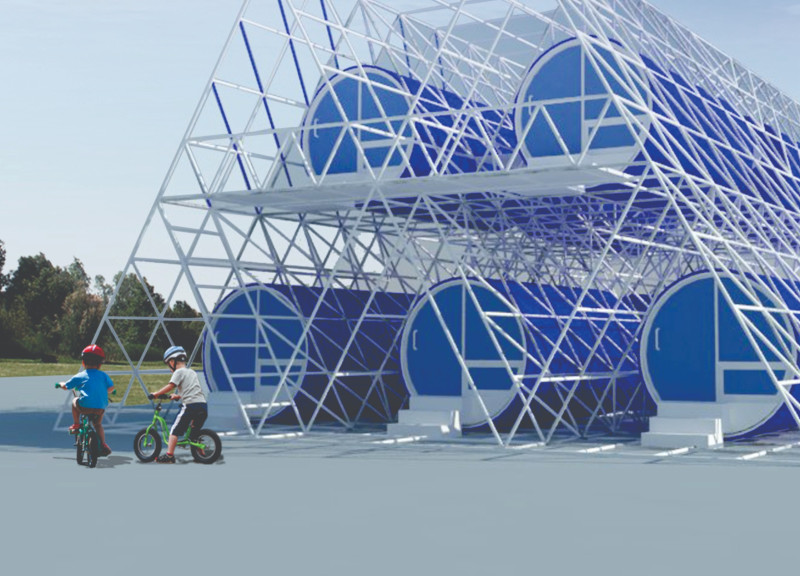5 key facts about this project
The Tandoon Housing project is an example of modern residential architecture that employs a cylindrical design to maximize space efficiency and enhance functionality. The project is characterized by its stacked cylindrical units, which create a spatial configuration conducive to both private and communal living. The design emphasizes adaptability, allowing for diverse usage patterns among residents while promoting a sense of community.
Unique Design Approaches and Materiality
One defining aspect of the Tandoon Housing project is its innovative structural composition. The cylindrical forms are constructed using a steel frame that provides strength and resilience while resisting environmental pressures. This approach offers increased durability compared to traditional forms. The extensive use of glass in windows and doors contributes to the overall openness of the design, allowing natural light to permeate living spaces. The integration of wood and plywood elements within the interiors adds warmth, contrasting the industrial materials and softening the overall aesthetic.
The spatial organization of the project facilitates a blend of private and communal areas. The stacking of the cylindrical units creates opportunities for interaction between residents while also allowing for personal retreats. Unique features, such as sliding panels and multifunctional furnishings, allow for flexibility within the living spaces, catering to various needs and lifestyle choices. This adaptability distinguishes the Tandoon Housing project from standard residential designs, positioning it as a model for future developments.
Sustainability and Community Engagement
Sustainability is a critical component of the Tandoon Housing project. The design maximizes natural light and airflow, reducing reliance on artificial lighting and mechanical climate control systems. This focus on energy efficiency demonstrates a commitment to eco-friendly design practices. Additionally, the layout promotes community engagement through shared spaces and communal facilities. By designing the project with an emphasis on social interaction, it addresses the need for connectivity and support among residents—an aspect often overlooked in conventional housing models.
For those interested in exploring the Tandoon Housing project further, reviewing the architectural plans, sections, and various design elements will provide deeper insights into its innovative approaches and functional aspects. Engaging with the detailed architectural designs will offer a more comprehensive understanding of how modern architecture can effectively respond to contemporary living requirements.
























